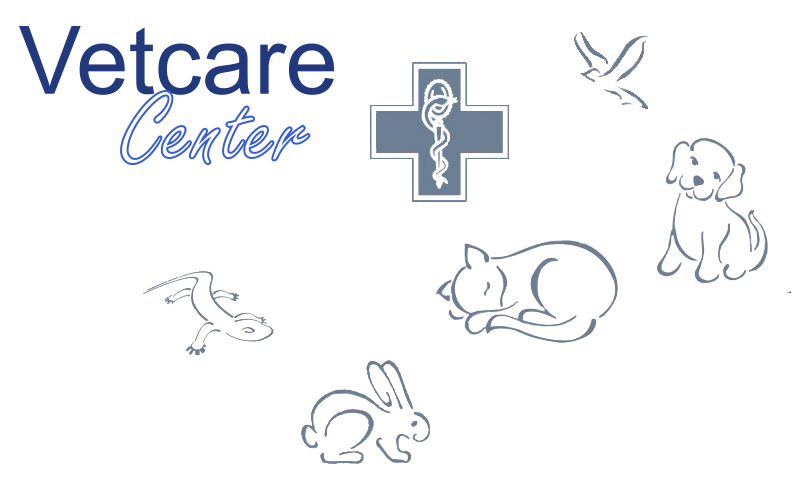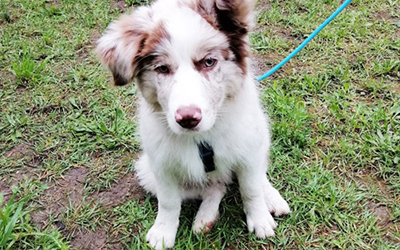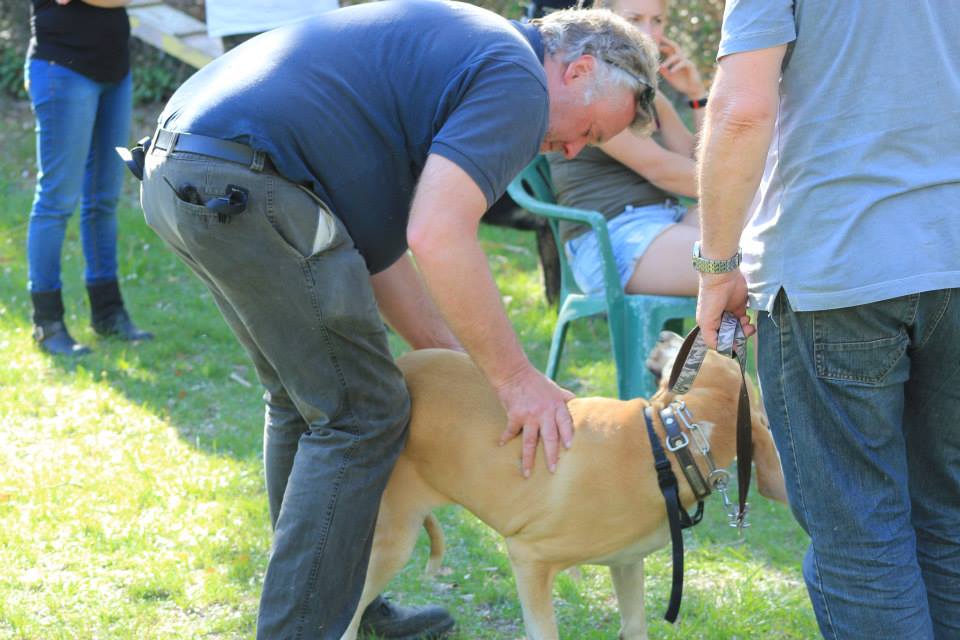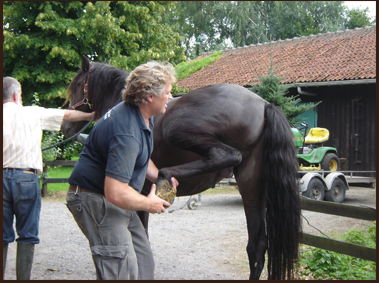

Osteopathy
Canine Osteopathy
1. What is Osteopathy :
This is to explain in a simple way, structural osteopathy, based on a manual “listening” to the body.
The main principles:
– “the organism is a whole”, that is to say that the osteopath takes into account the unity of the body:
This is why the osteopath does not just take care of a paw if your animal limps. A full body examination is performed. Lameness can originate from a lesion of the leg but also, and this is often the case, of a vertebra (often in the area of the withers) or a rib.
– “the interaction between systems”
The organism is a set of systems: respiratory, muscular, circulatory, reproductive, nervous system… Each of these systems is dependent on the others. Let’s take an example: A dysfunction at the nervous level generates, among other things, a muscular contracture on the same area of the body or much further. These muscles compressing the surrounding arteries, the circulatory system is then affected in turn. In turn, the organs irrigated by these same arteries will function less well.
– “principle of homeostasis”
This is the notion of “state of good health”
In other words, the body is a machine that is already programmed to fight against all kinds of aggression. There are a large number of mechanisms in the body ready to go into action.
Most microbial attacks go unnoticed because they are neutralized by a whole process of self-medication.
However, this machine is only effective if it works well. For this, each of the elements that compose it must be in its place.
– “Notion of mobility”:
Thus, it is said that “structure governs function”
If any element lacks mobility, it can no longer function properly. This principle is true for bone elements but also for organs. Let’s take a dog whose vertebra is injured following a shock. This vertebra therefore loses its mobility. Imagine that the spine is a chain and that the “blocked” vertebra is a rusty link. The general flexibility of the chain is thus affected. For our dog, the principle is somewhat the same. The vertebral column is no longer exactly in the right axis, forcing the pelvis, then the two posteriors to “work crookedly”!
We can conclude this brief presentation by saying that osteopathy aims to restore the initial state of good health. If nature is marvelously well made, the osteopath helps it to act to its maximum without adding or subtracting anything from the body, and without ever crossing the skin barrier. The osteopath helps the animal, by intelligently removing certain barriers, to heal itself with what nature has given it.
Equine Osteopathy
Osteopathy is a manual technique that restores the balance of the horse’s body as a whole; both at the articular, tendon circulatory, lymphatic and energetic level.
- His athletic performance
- Its comfort of life
- His refusal to work
- Decreased performance
We can treat:
Osteopathic pathologies such as:
- Lameness
- The correction of the mobility of the feet and this in collaboration with the farrier
- Falls after accident
- Back pain
- Locomotor, muscular, urinary, flexion, sexual, nervous, lymphatic and energy problems, etc.
- Digestive disorders
- Stasis colic
- Recurrent colic etc.
2. When to call an osteopath
We have seen previously what osteopathy is. Let’s see now in which cases to call on the osteopath:
Several areas :
– When the dog has just suffered a shock
This is the case of the dog that has been hit by a car, the one that falls down the stairs, that violently collides with another dog or that meets too closely the foot of a horse.
– For working, utility and sport dogs
By his generosity the dog exposes himself to go beyond these limits, continuing the effort to please his master. This is the case of the guide dog for the blind, the shepherd, the hunting dog who do not always seem to feel tired. It is then necessary for the master to have a perfect knowledge of his dog to be able to detect the smallest sign: For the ring dog, it will be a dog with a bite a little less frank on one side than on the other. For the agility dog, these will be slower turns after such an obstacle. And for everyone, physical discomfort can lead to less concentration, less hard work.
Studies have shown how animals react differently to training depending on whether they are in good shape or not. The learning capacities, the good will of the animal are clearly optimized when it has been previously seen by an osteopath. It is also interesting to note the important parallel that the osteopath and the behaviorist can establish.
(another problem for the master: where to start? … but that’s another story as Kipling said)
– When the dog has recurrent pathologies that allopathic medicine cannot solve.
Imagine the body as a vast network of pipes, transporting fuel, evacuating waste, conveying the orders given by the control tower. If, at different places on this circuit, there are areas of strong slowdown, or even a total stoppage of traffic, it is easy to understand that the whole of this system works less well.
In the body, if there are one or more “blockage” zones, it is obvious that the organs irrigated and innervated by nerves and vessels crossing these zones, will risk finding themselves in pain.
Again, nature is well done, and many compensation systems are put in place. But beware, this process is not infinitely adaptable. Over time, the problems can then appear (or reappear), and become irreversible.
Your puppy comes to you with all its original genetic potential.
It is up to you to best preserve its “health capital”.


